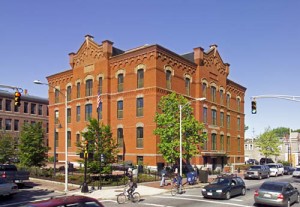Energy Codes: Keeping Occupants Safe and Healthy
By Moses Riley | Wed, January 15, 20
My grandparents used to live in an 1821 Connecticut farmhouse. The property was beautiful – original wood floors and beams, nine acres of yard, a horse shed, big garden, small creek, and towering maple and oak trees. We always considered spending the holiday season there, but never did; mold, mildew, and rot that had grown throughout the structure triggered allergic reactions and severely limited our ability to stay overnight.
Massachusetts Building Energy Codes: A Year in Reflection
By Kai Palmer-Dunning | Fri, December 6, 19
A History of Climate Leadership
A Zero Energy Vision for Massachusetts
By Christina Rohrbacher | Thu, January 17, 19
Massachusetts has been number one on the ACEEE Energy Efficiency Scorecard for eight years in a row. It is important that we celebrate this massive achievement. It’s also important to recognize that we have the tools, the state leadership, and the grassroots manpower to do better.
Building energy codes: A critical piece of the climate change puzzle
By Christina Rohrbacher | Wed, February 7, 18
Building energy codes are a critical piece of the puzzle in the fight against climate change. Carbon emissions reduction plans must include energy codes that are regularly updated in order to effectively fight climate change.
Renewable energy, like solar and wind, are popular and effective energy sources that will drastically reduce our carbon emissions. They are buzzwords that fill our social media feeds and are sexy alternatives to coal and oil. They also remind us that a world beyond fossil fuels is achievable. But what about energy efficiency?
Green codes underway in Rhode Island – is this the future of public policy?
By neepenergy | Fri, February 3, 12

City Hall Annex - Cambridge's first high performance municipal building Photo: City of Cambridge and Blind Dog Photo, Inc.
Advanced Building Energy Codes: Knowledge at your Fingertips
By neepenergy | Wed, May 25, 11
Free one hour webinar on Tuesday, May 31st (3-4 PM)

